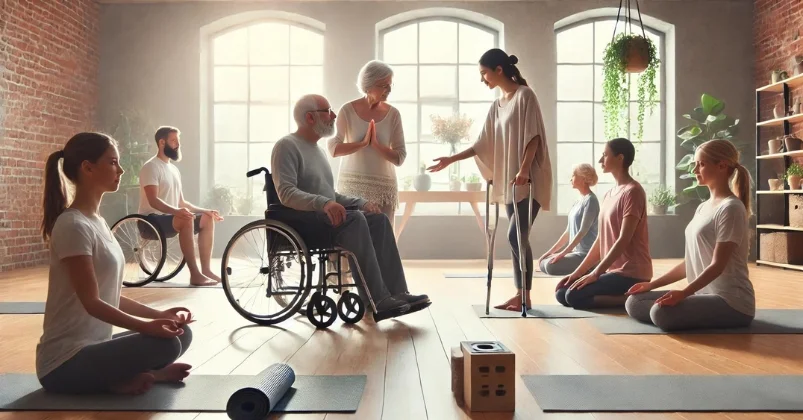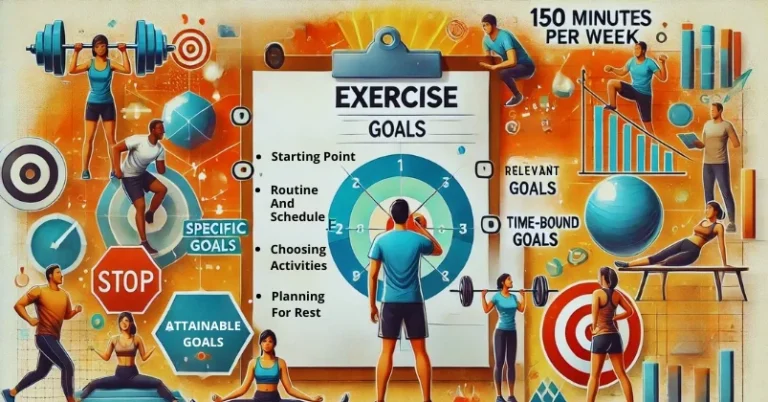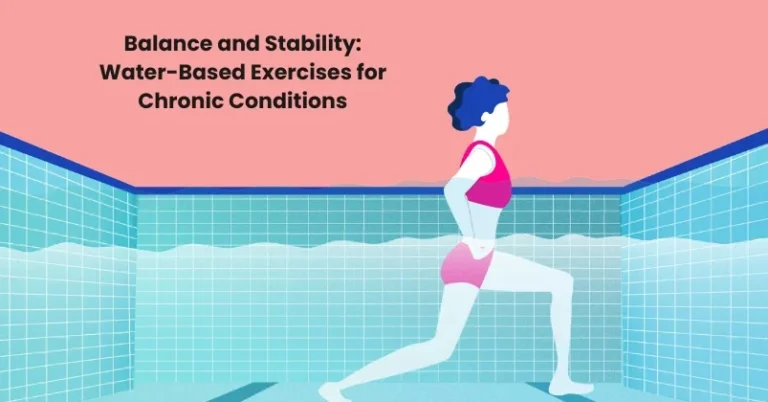Adaptive Yoga: A Promising Solution for Fibromyalgia
Adaptive yoga is a gentle form of yoga that has been gaining popularity among people with fibromyalgia. This type of yoga is designed to be accessible to people of all abilities and can be modified to meet the specific needs of those with fibromyalgia. Adaptive yoga can help relieve pain, reduce stress, and improve overall well-being.
Fibromyalgia is a chronic pain condition that affects millions of people worldwide. It is characterized by widespread pain, fatigue, and other symptoms such as sleep disturbances, headaches, and cognitive difficulties. While there is no cure for fibromyalgia, there are many treatments available that can help manage symptoms and improve quality of life. Adaptive yoga is one such treatment that is effective for people with fibromyalgia.
Key Takeaways
- Adaptive yoga is a gentle form that can be modified to meet the specific needs of people with fibromyalgia.
- Adaptive yoga can help relieve pain, reduce stress, and improve overall well-being for people with fibromyalgia.
- Adaptive yoga is one of many treatments available for fibromyalgia, and it is important to consult with healthcare providers to determine the best course of treatment.
Understanding Fibromyalgia
Fibromyalgia is a chronic disorder that is characterized by widespread musculoskeletal pain, fatigue, and tenderness in localized areas. It is a complex condition that is difficult to diagnose and treat.
Symptoms
The symptoms of fibromyalgia can vary from person to person, but some of the most common symptoms include:
- Chronic pain
- Musculoskeletal pain
- Muscle fatigue
- Sleep disturbances
- Cognitive difficulties
- Functional limitations
Chronic Pain
Chronic pain is the hallmark symptom of fibromyalgia. It is typically described as a deep, aching pain that is present throughout the body. This pain can be severe and debilitating, making it difficult to perform everyday tasks.
Musculoskeletal Pain
Musculoskeletal pain is another common symptom of fibromyalgia. This pain is typically localized to specific areas of the body, such as the neck, shoulders, and back. It can also be accompanied by muscle stiffness and tenderness.
Muscle Fatigue
Muscle fatigue is a common symptom of fibromyalgia that can make it difficult to perform everyday tasks. This fatigue is often accompanied by muscle weakness and a feeling of heaviness in the limbs.
Functional Limitations
Functional limitations are another common symptom of fibromyalgia. These limitations can make it difficult to perform everyday tasks, such as lifting objects or walking up stairs. They can also impact a person's ability to work and participate in social activities.
In summary, fibromyalgia is a complex disorder that is characterized by chronic pain, musculoskeletal pain, muscle fatigue, cognitive difficulties, and functional limitations. It is important to understand these symptoms to properly diagnose and treat this condition.
Adaptive Yoga: An Overview
Adaptive yoga is a form of yoga that makes the practice accessible to individuals with physical limitations or disabilities. It is a modified form of yoga that is designed to meet the needs of people with different abilities. Adaptive yoga classes are taught by certified yoga teachers who have training in adapting yoga postures and sequences to meet the needs of students with disabilities.
The practice of adaptive yoga is a physical practice that involves yoga postures, breathing exercises, and meditation. The focus of adaptive yoga is on the individual's abilities and needs, rather than on achieving a specific posture or level of flexibility. The practice is designed to be gentle, safe, and therapeutic, and can be modified to meet the needs of individuals with different levels of ability.
Adaptive yoga is particularly beneficial for individuals with fibromyalgia, a condition that causes chronic pain, fatigue, and stiffness. Yoga postures can help to reduce pain, increase flexibility, and improve overall physical function. In addition, breathing exercises and meditation can help to reduce stress and improve mental health.
Yoga teachers who specialize in adaptive yoga for fibromyalgia can work with individuals to develop a yoga practice that meets their specific needs. They can help to modify postures and sequences to accommodate physical limitations and can guide breathing and meditation techniques that can help to reduce pain and stress.
Overall, adaptive yoga is a safe and effective form of yoga that can be practiced by individuals with physical limitations or disabilities, including those with fibromyalgia. With the guidance of a trained yoga teacher, individuals can develop a yoga practice that is tailored to their specific needs and abilities and can experience the many benefits of this ancient practice.
Adaptive Yoga Poses for Fibromyalgia
Adaptive yoga is a modified form of yoga that is designed to suit the needs of people with physical limitations, chronic pain, or disabilities. It is an excellent form of exercise for people with fibromyalgia, as it helps to improve flexibility, reduce stress, and alleviate pain. Here are some adaptive yoga poses that can be beneficial for people with fibromyalgia:
Cobra Pose (Bhujangasana)
Cobra pose is a gentle backbend that can help to stretch the spine, chest, and shoulders. It can also help to strengthen the back muscles and improve posture. To perform a cobra pose, lie face down on the floor with your hands under your shoulders. Inhale and lift your chest off the floor, keeping your elbows close to your body. Hold for a few breaths, then exhale and lower your chest back down to the floor.
Corpse Pose (Savasana)
Corpse pose is a relaxation pose that can help to reduce stress and promote relaxation. To perform a corpse pose, lie on your back with your arms and legs extended. Close your eyes and take slow, deep breaths. Focus on relaxing your body and clearing your mind.
Mountain Pose
A mountain pose is a standing pose that can help to improve posture and balance. To perform the mountain pose, stand with your feet hip-width apart and your arms at your sides. Press your feet into the ground and lift the crown of your head towards the ceiling. Hold for a few breaths, then release.
Tree Pose
A tree pose is a balancing pose that can help to improve balance and strengthen the legs. To perform the tree pose, stand with your feet hip-width apart and your arms at your sides. Shift your weight onto your left foot and lift your right foot off the ground. Place the sole of your right foot on your left inner thigh or calf. Press your foot into your leg and bring your hands to your heart center. Hold for a few breaths, then release and switch sides.
Warrior I
Warrior I is a standing pose that can help to stretch the hips, thighs, and shoulders. It can also help to improve balance and strength. To perform warrior I, stand with your feet hip-width apart and your arms at your sides. Step your left foot back and turn your left foot out to a 45-degree angle. Bend your right knee and lift your arms overhead. Hold for a few breaths, then release and switch sides.
Bridge Pose (Setu Bandha Sarvangasana)
Bridge pose is a gentle backbend that can help to stretch the spine and open the chest. It can also help to strengthen the back muscles and improve posture. To perform a bridge pose, lie on your back with your knees bent and your feet flat on the floor. Press your feet into the ground and lift your hips towards the ceiling. Interlace your fingers under your back and press your arms into the ground. Hold for a few breaths, then release.
Standing Forward Bend (Uttanasana)
Standing forward bend is a gentle forward fold that can help to stretch the hamstrings and lower back. It can also help to reduce stress and promote relaxation. To perform standing forward bend, stand with your feet hip-width apart and your arms at your sides. Exhale and fold forward from the hips, keeping your knees slightly bent. Let your head and arms hang towards the ground. Hold for a few breaths, then release.
Adaptive yoga poses can be a great way to help manage the symptoms of fibromyalgia. By modifying the poses to suit your needs, you can improve your flexibility, reduce stress, and alleviate pain.
Benefits of Adaptive Yoga for Fibromyalgia
Adaptive yoga is a modified form of yoga that is designed to make the practice accessible to everyone, regardless of their physical abilities. It is particularly beneficial for people with fibromyalgia, a chronic pain condition that affects millions of people worldwide.
One of the primary benefits of adaptive yoga for fibromyalgia is pain relief. The gentle movements and stretches used in adaptive yoga can help to loosen up tight muscles and joints, reducing pain and stiffness. Additionally, yoga has been shown to stimulate the release of endorphins, which are natural painkillers produced by the body.
Another benefit of adaptive yoga for fibromyalgia is improved flexibility and balance. Many people with fibromyalgia experience reduced range of motion and decreased balance, which can lead to falls and injuries. Adaptive yoga can help to improve flexibility and balance, reducing the risk of falls and improving overall quality of life.
Adaptive yoga can also be an effective tool for managing stress and anxiety, which are common symptoms of fibromyalgia. The breathing and meditation techniques used in yoga can help to calm the mind and reduce feelings of anxiety and depression.
In addition to these benefits, adaptive yoga can also help to improve overall well-being and quality of life. Regular practice can lead to increased body awareness and a greater sense of relaxation and calm. It can also improve sleep quality, which is essential for people with fibromyalgia who often struggle with insomnia and other sleep disturbances.
Overall, adaptive yoga is a safe and effective form of exercise for people with fibromyalgia. It can help to reduce pain, improve flexibility and balance, manage stress and anxiety, and improve overall well-being and quality of life.
Breathing and Meditation Techniques
Breathing and meditation techniques are integral components of adaptive yoga for fibromyalgia. These techniques can help individuals with fibromyalgia to reduce stress, anxiety, and depression, which are common symptoms of the condition. Additionally, they can help to improve sleep quality, increase energy levels, and enhance overall well-being.
Breathwork
Breathwork is a fundamental aspect of adaptive yoga for fibromyalgia. It involves a variety of techniques that focus on breathing patterns, such as deep breathing, abdominal breathing, and alternate nostril breathing. These techniques can help individuals with fibromyalgia to improve their lung capacity, increase oxygen flow to the body, and reduce stress and anxiety.
Deep breathing, in particular, is a simple yet effective technique that can be done anywhere, anytime. It involves inhaling deeply through the nose, filling the lungs with air, and exhaling slowly through the mouth. This technique can help to calm the mind and reduce tension in the body.
Mindfulness
Mindfulness is another key component of adaptive yoga for fibromyalgia. It involves paying attention to the present moment and accepting it without judgment. Mindfulness practices can help individuals with fibromyalgia to become more aware of their thoughts, feelings, and bodily sensations, which can lead to a greater sense of self-awareness and self-compassion.
Meditation practices, such as guided imagery and body scan meditations, can also be helpful for individuals with fibromyalgia. These practices involve focusing the mind on a specific image or sensation, which can help to reduce stress and anxiety and promote relaxation.
Self-Care
Self-care is an important aspect of adaptive yoga for fibromyalgia. It involves taking care of oneself physically, emotionally, and mentally. Self-care practices, such as taking a warm bath, getting a massage, or practicing gentle yoga, can help individuals with fibromyalgia to manage their symptoms and improve their overall quality of life.
In summary, breathing and meditation techniques are essential components of adaptive yoga for fibromyalgia. These techniques can help individuals with fibromyalgia to reduce stress, anxiety, and depression, improve sleep quality, increase energy levels, and enhance overall well-being. Incorporating these practices into a daily routine can lead to significant improvements in symptoms and overall quality of life.
Yoga and Other Health Conditions
Yoga is a versatile form of exercise that can be adapted to meet the needs of individuals with a wide range of health conditions. In addition to fibromyalgia, yoga is beneficial for people with multiple sclerosis, arthritis, Parkinson’s disease, and mental health conditions such as anxiety and depression.
Research has shown that yoga can help alleviate symptoms associated with these conditions, including pain, stiffness, fatigue, and sleep disturbances. For example, a study published in the Journal of Alternative and Complementary Medicine found that yoga improved sleep quality and reduced fatigue in people with multiple sclerosis.
Yoga has also been found to be helpful for people with arthritis. A study published in the Journal of Rheumatology found that yoga improved joint flexibility and reduced pain and stiffness in people with rheumatoid arthritis.
In addition to physical benefits, yoga has also been found to have a positive impact on mental health. A review of 23 studies published in the Journal of Psychiatric Practice found that yoga was effective in reducing symptoms of anxiety and depression.
Overall, yoga is a safe and effective form of exercise for people with a wide range of health conditions. However, it is important to work with a qualified yoga instructor who can help you modify poses to meet your individual needs.
Different Yoga Styles for Fibromyalgia
When it comes to yoga for fibromyalgia, there are many different styles to choose from. Each style can offer unique benefits to help manage the symptoms of fibromyalgia.
Hatha Yoga
Hatha yoga is a gentle yoga style that focuses on breathing and relaxation. This style is perfect for beginners or those with limited mobility. Hatha yoga can help reduce stress, improve flexibility, and increase strength.
Restorative Yoga
Restorative yoga is a gentle and relaxing style that uses props to support the body in various poses. This style is perfect for those with chronic pain or fatigue. Restorative yoga can help reduce stress, improve sleep, and increase flexibility.
Yin Yoga
Yin yoga is a slow-paced style that focuses on holding poses for an extended period. This style is perfect for those with chronic pain or stiffness. Yin yoga can help increase flexibility, reduce stress, and improve circulation.
Ashtanga Yoga
Ashtanga yoga is a more vigorous style that focuses on flowing through a set sequence of poses. This style is perfect for those with more energy and stamina. Ashtanga yoga can help increase strength, improve flexibility, and reduce stress.
Bikram Yoga
Bikram yoga, also known as hot yoga, is a style that is practiced in a heated room. This style is perfect for those who prefer a more intense workout. Bikram yoga can help increase strength, improve flexibility, and reduce stress.
Vinyasa Yoga
Vinyasa yoga is a flowing style that links movement with breath. This style is perfect for those who want to build strength and flexibility. Vinyasa yoga can help increase cardiovascular health, reduce stress, and improve mental focus.
In conclusion, there are many different yoga styles to choose from when managing the symptoms of fibromyalgia. Each style can offer unique benefits, so it's important to find the style that works best for you. Remember to always listen to your body and modify poses as needed.
Research on Yoga and Fibromyalgia
Research has shown that yoga can be an effective complementary therapy for fibromyalgia. A meta-analysis of 7 randomized controlled trials found that yoga was associated with significant reductions in pain, fatigue, and depression in fibromyalgia patients. Another randomized controlled trial found that a yoga intervention improved fibromyalgia symptoms, including pain, fatigue, and quality of life, compared to a control group.
The National Center for Complementary and Integrative Health (NCCIH) also recognizes yoga as a potential therapy for fibromyalgia. According to the NCCIH, yoga may help reduce pain, improve mood, and increase physical function in fibromyalgia patients.
Additionally, yoga may help regulate cortisol levels in fibromyalgia patients. Cortisol is a hormone that plays a role in stress response and inflammation. A study found that an 8-week yoga intervention was associated with reduced cortisol levels in fibromyalgia patients.
Overall, the research suggests that yoga can be a beneficial therapy for fibromyalgia patients. However, it is important to note that yoga should not be used as a substitute for medical treatment, and patients should always consult with their healthcare provider before starting a new exercise program.
Adaptive Yoga and Physical Limitations
Adaptive yoga is a type of yoga that aims to make yoga poses accessible to everyone, regardless of their physical or neurological limitations. This type of yoga is especially beneficial for people with fibromyalgia, a condition that causes widespread pain, fatigue, and other symptoms.
One of the main benefits of adaptive yoga is that it can be modified to fit the needs of people with physical limitations. For example, people with limited mobility can use props like chairs, blocks, and straps to help them achieve the correct alignment in yoga poses. People with disabilities can also benefit from adaptive yoga, as it can be tailored to their specific needs and abilities.
When practicing adaptive yoga, it's important to pay attention to your body and avoid pushing yourself too hard. This is especially important for people with fibromyalgia, as they may experience pain and tension in their muscles and joints. By practicing good posture and focusing on gentle, controlled movements, people with fibromyalgia can reduce tension and improve their overall physical well-being.
Some specific poses that can be helpful for people with fibromyalgia include:
- Chest openers: These poses can help relieve tension in the chest and improve breathing. Examples include the cobra pose and the camel pose.
- Hip openers: These poses can help relieve tension in the hips and improve flexibility. Examples include the pigeon pose and the butterfly pose.
- Knee-friendly poses: These poses can help reduce strain on the knees and improve stability. Examples include the mountain pose and the tree pose.
Overall, adaptive yoga is a safe and effective way for people with fibromyalgia to improve their physical health and well-being. By working with a qualified yoga instructor and practicing regularly, people with fibromyalgia can experience greater flexibility, reduced pain and tension, and improved overall quality of life.
Consulting with Healthcare Providers
If you are considering adaptive yoga for fibromyalgia, it is important to consult with your healthcare provider before starting any new exercise program. Your physician or healthcare provider can provide valuable insight and guidance on how to safely and effectively incorporate yoga into your treatment plan.
Your healthcare provider can also advise you on any medications you may be taking and how they may interact with yoga practice. It is important to discuss any concerns you may have about medication side effects or interactions with your healthcare provider before beginning yoga.
Additionally, your healthcare provider may be able to recommend specific yoga poses or modifications that are best suited to your individual needs and limitations. They can also help you set realistic goals for your yoga practice and monitor your progress over time.
Overall, consulting with your healthcare provider before starting adaptive yoga for fibromyalgia is an important step in ensuring the safety and effectiveness of your practice. By working together with your healthcare provider, you can develop a personalized yoga practice that supports your overall health and well-being.
Other Therapies for Fibromyalgia
In addition to adaptive yoga, several other therapies are effective in managing fibromyalgia symptoms. These therapies include tai chi, qigong, physical activity, and aerobic exercise.
Tai Chi and Qigong
Tai chi and qigong are meditative movement therapies that involve slow, gentle movements combined with deep breathing and relaxation techniques. Several studies have found that these therapies can be effective in reducing pain, fatigue, and depression in people with fibromyalgia. Tai chi and qigong can also improve balance and flexibility, which can help prevent falls and improve overall physical function.
Physical Activity
Physical activity, such as walking, swimming, or cycling, can also be beneficial for people with fibromyalgia. Regular physical activity can help reduce pain, improve sleep quality, and increase overall physical function. It is important to start slowly and gradually increase the intensity and duration of physical activity over time.
Aerobic Exercise
Aerobic exercise, such as jogging, dancing, or aerobics classes, can also be effective in managing fibromyalgia symptoms. Several studies have found that aerobic exercise can improve pain, fatigue, and physical function in people with fibromyalgia. It is important to start slowly and gradually increase the intensity and duration of aerobic exercise over time.
In summary, there are several other therapies besides adaptive yoga that can be effective in managing fibromyalgia symptoms. Tai chi, qigong, physical activity, and aerobic exercise have all been found to be beneficial for people with fibromyalgia. It is important to consult with a healthcare professional before starting any new exercise or therapy program.
FAQs
Gentle and adaptive yoga styles are best suited for individuals with fibromyalgia. These styles focus on slow movements, deep breathing, and relaxation techniques. Restorative yoga, Yin yoga, and Hatha yoga are great options for individuals with fibromyalgia.
In addition to yoga, low-impact exercises like walking, swimming, and cycling can be effective for managing fibromyalgia pain. Stretching and strength training exercises can also help alleviate pain and stiffness.
Maintaining a healthy and balanced diet, getting enough sleep, and reducing stress can help alleviate fibromyalgia symptoms. It's also important to stay hydrated, avoid smoking and excessive alcohol consumption, and practice good posture.
Coping mechanisms for living with fibromyalgia include practicing mindfulness, engaging in relaxation techniques, seeking support from loved ones and healthcare professionals, and setting realistic goals.
Yes, yoga can be beneficial for individuals with fibromyalgia. Yoga can help alleviate pain, reduce stress and anxiety, improve sleep quality, and increase flexibility and strength.
Individuals with fibromyalgia should avoid processed foods, caffeine, alcohol, and sugar. They should also limit their intake of red meat and dairy products and focus on eating a balanced diet rich in fruits, vegetables, whole grains, and lean protein sources.







